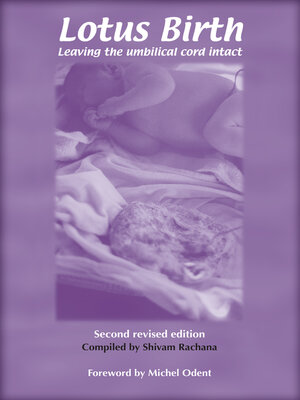
Sign up to save your library
With an OverDrive account, you can save your favorite libraries for at-a-glance information about availability. Find out more about OverDrive accounts.
Find this title in Libby, the library reading app by OverDrive.



Search for a digital library with this title
Title found at these libraries:
| Library Name | Distance |
|---|---|
| Loading... |
Lotus Birth is the practice of not cutting the umbilical cord immediately after the babies are born, and leaving it attached to fall off by itself. When the reasons are understood and the resulting peacefulness of the babies is seen, it becomes the most logical thing to do.
There is no medical reason to cut the cord.
This practice highlights and calls into question the standard practice of immediate cord clamping and the recently popularized 'cord blood banking' procedure which places the newborn in a highly compromised situation, depriving it of 30% to 50% of its full quota of blood. This is the amount of blood in the cord and placenta at birth, and which is, in the natural order, destined to fill the infant's major organs. There are grave ethical issues here.
Immediate cord clamping, which is current obstetric practice leaves the mother's body coping with the implosion that results from the clamping, leaving her more susceptible to post-partum haemorrhage (PPH).
Lotus-born babies have a fully healed navel a few days after birth, whereas most babies have a cord stump, which is susceptible to infection and takes on average two weeks to drop off.
There is no research on the long-term consequences of depriving the newborn of this extremely valuable cord blood which is full of stem cells, iron and enzymes..
The practice has been driven by hospital timetables, not by infant–mother welfare.
Traditional midwifery practice was to ensure that the cord was 'milked', ensuring that the baby received the full quota.
As the number of maladies in the general population increases rather than diminishes in spite of increased knowledge and services, we may well ask if the practices at the beginning of life endanger rather than enhance our long-term well being.
This remarkable book, a world first publication on the subject, provides a most thorough explanation and exploration of this primal experience that we all have when we are born. There are contributions from doctors, philosophers ,midwives, anthropologists, psychologists, doulas and the parents of Lotus Born children given a breath and depth to the discussion and the information.
This is a book that will take you into the unknown and leave you greatly enriched by the experience. It speaks of the true nature of your cells and the basic primal needs of your mammalian nature. it may also enrage you as you realize what has happen to you and, if you have them, to your children.
This book inspires and gives great hope as you read the stories of wonderful natural births and families who have taken their lives into their own hands with inspiring outcomes.







